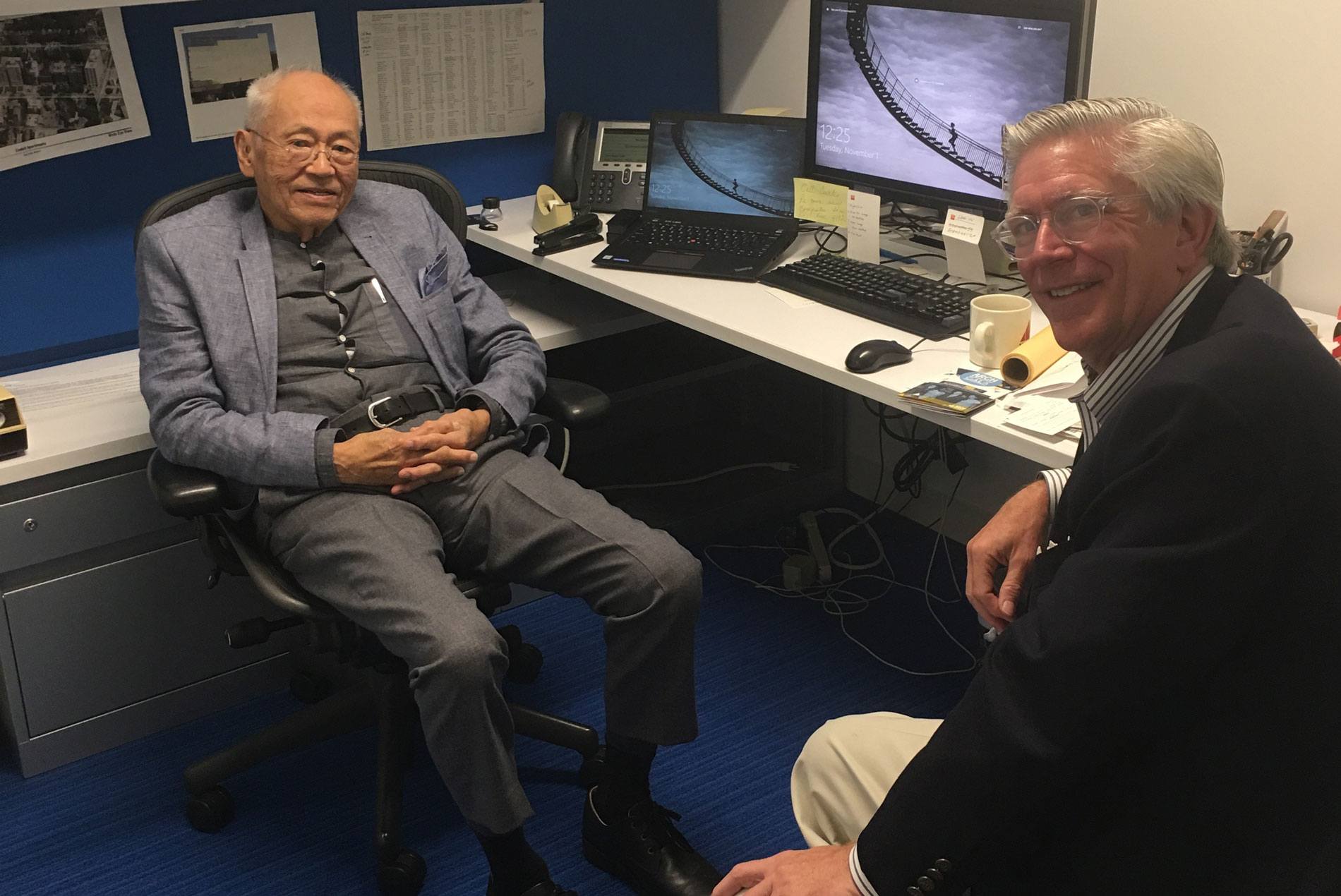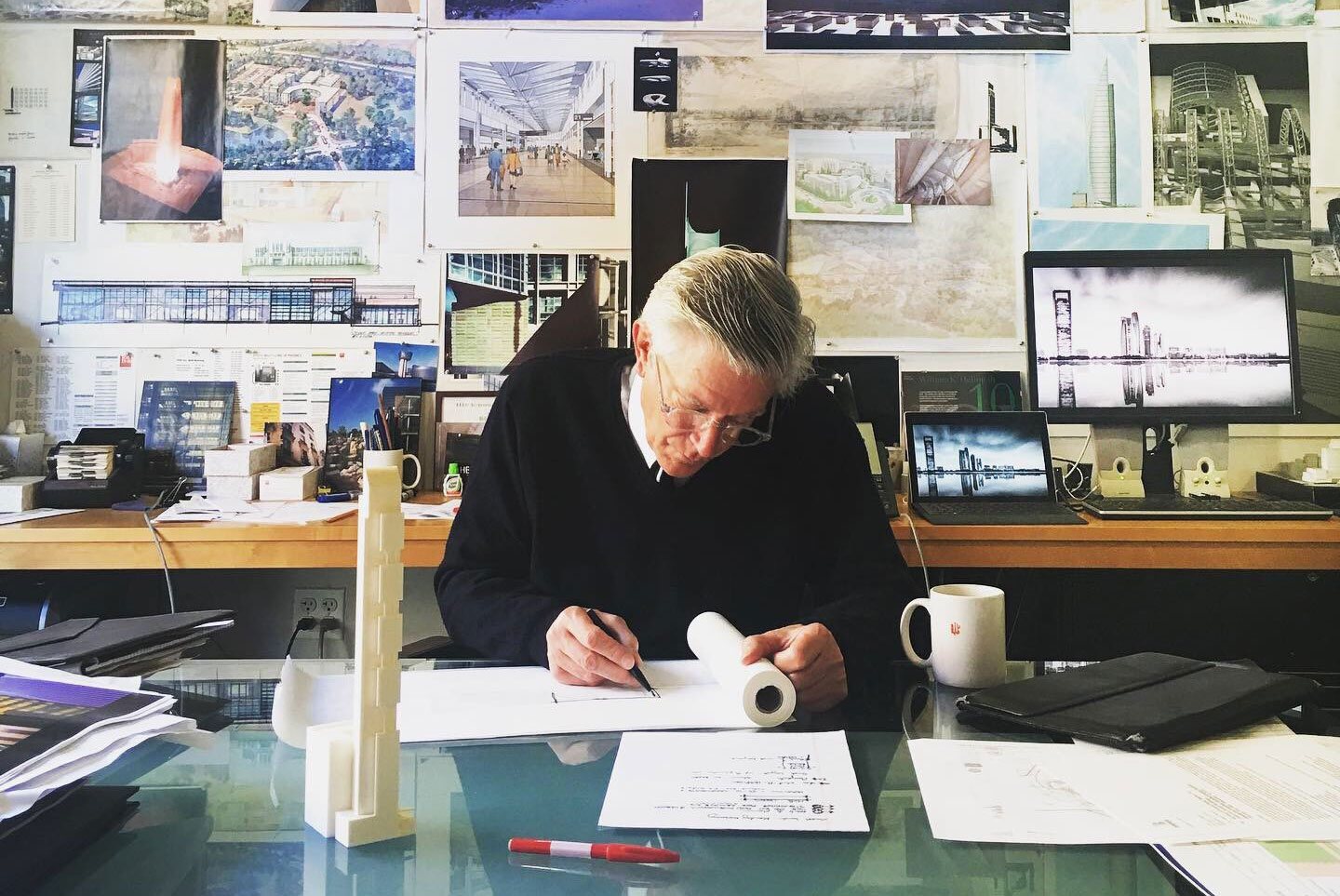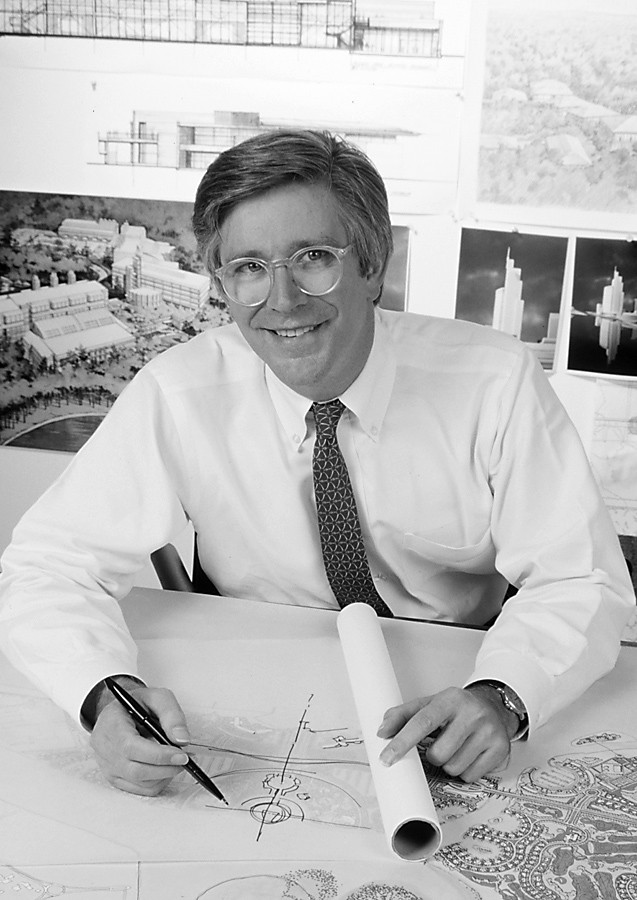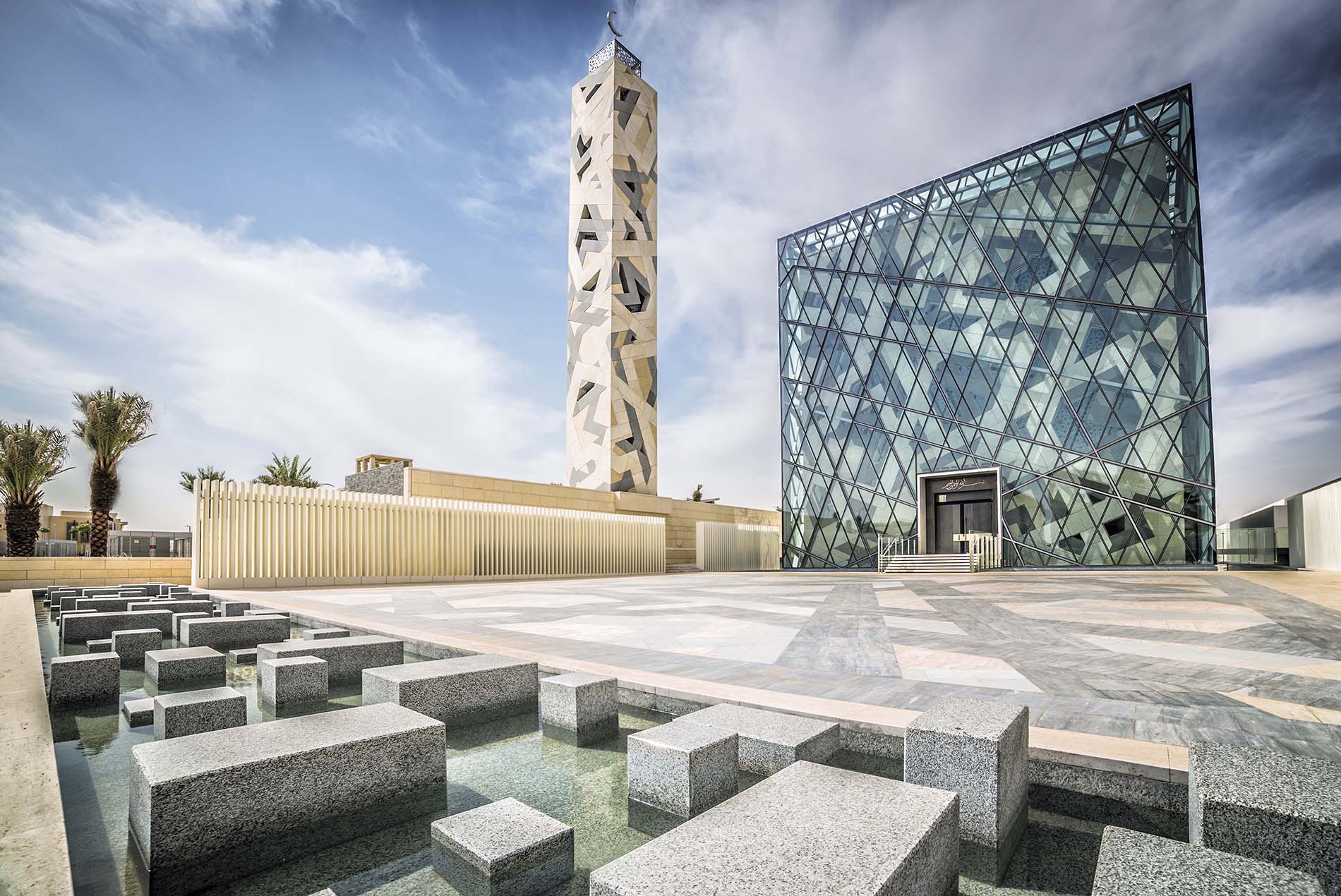William (Bill) Hellmuth, FAIA, the chairman and CEO of HOK, passed away on April 6, 2023, after a long illness.
An extraordinary architect and leader, Hellmuth designed dozens of award-winning buildings across the globe and, as president and later chairman and CEO of HOK, raised HOK’s profile within the design community and beyond. During his leadership, HOK was listed as one of the world’s most influential companies by Time Magazine, repeatedly earned mention in Fast Company’s list of most innovative companies and was annually ranked the world’s largest design firm specializing in both architecture and engineering.
While proud of HOK’s accomplishments, Hellmuth kept his focus on the future and was happiest while brainstorming ideas with clients and HOK project teams. He was elected president of HOK, Inc. in 2005. When tapped to become CEO in 2016, Hellmuth accepted the role on the condition that he could remain the design principal for HOK’s Washington, D.C., studio and firm-wide design leader. A year later, he also was named chairman.
Susan Klumpp Williams, managing principal of the D.C. office, worked alongside Hellmuth for more than 30 years. She recalls how he would impress clients with his commitment to their projects even while overseeing the firm’s global strategies and operations.
“They never expected him to be so hands-on. But that is something Bill took great pride in,” said Klumpp Williams. “He was happiest when working with one of our designers at their desk. His passion for design and our profession inspired those of us who had the privilege of working closely with him.”

Abu Dhabi National Oil Company Headquarters, Abu Dhabi, UAE
A few of Hellmuth’s most notable designs include the 75-story Abu Dhabi National Oil Company Headquarters in the UAE; the U.S. Embassy Chancery and Office Annex in Moscow; the U.S. Embassy in Nairobi; the Sheraton Inn Timika Guest House in Irian Jaya, Indonesia; Msheireb Downtown Doha mixed-use community in Qatar; King Abdullah Petroleum Studies and Research Center and Residential Community in Riyadh, Saudi Arabia; Rhine Ordnance Barracks Medical Center Replacement in Kaiserslautern, Germany; the U.S. Environmental Protection Agency Headquarters in Research Triangle Park, North Carolina; Morgan State University’s Jenkins Hall Behavioral and Social Sciences Center in Baltimore; and the Hampton Roads Convention Center in Hampton, Virginia.

National Air and Space Museum Steven F. Udvar-Hazy Center, Chantilly, Virginia
Hellmuth took particular pride in the dozens of buildings he and the HOK team designed in and around his adopted hometown of Washington, D.C. These include the Constitution Square mixed-use district; the D.C. Consolidated Forensic Laboratory; the National Air and Space Museum Steven F. Udvar-Hazy Center in Chantilly, Virginia; NOAA’s National Center for Weather and Climate Prediction in College Park, Maryland; Walter Reed National Military Medical Center Hospital Renovation in Bethesda, Maryland; and the Chevy Chase Center in Chevy Chase, Maryland.
“My kids hate driving around the city with me,” he would joke. “I’m always telling stories about one project or another.”
Hellmuth’s work, which won 29 awards from the American Institute of Architects, spanned nearly every building type and 20 countries. The U.S. General Services Administration invited him to become a GSA Design Excellence Peer shortly after he directed the design of a confidential headquarters for a U.S. federal government agency in the late 1990s. In 2017, the AIA elevated him to its prestigious College of Fellows. In 2018, the University of Virginia’s School of Architecture honored him with its Distinguished Alumni Award. Hellmuth earned a master’s degree in architecture at Princeton University and a bachelor’s in architecture from University of Virginia.
He began his career in New York, where he spent 14 years designing Manhattan office buildings. In 1991, he joined HOK at the urging of firm cofounder Gyo Obata. Decades earlier, Obata partnered with St. Louis architects George Kassabaum and George Hellmuth (Bill’s uncle) to create Hellmuth, Obata & Kassabaum (HOK). At the time of his hiring, Hellmuth, who grew up in Cleveland, had only a vague knowledge of HOK and its backstory.
“I rediscovered all the Hellmuths when I got to St. Louis,” he told the Washington Business Journal in a 2008 profile. “It was interesting to find that my uncle’s principles in founding the firm are still relevant today. He believed in geographic and project type diversity, an idea that is really beneficial when there is a downturn in the marketplace.”
Hellmuth would spend just 18 months in HOK’s St. Louis office before moving on to the firm’s Washington, D.C., studio. In those months, he discovered a mentor in Obata and a humility he hadn’t seen until that point in his career.

Hellmuth and Gyo Obata in HOK’s St. Louis office in November 2016.
“Gyo was very human and humble, and because of him there’s a lot of good Midwestern values imbued in HOK,” Hellmuth told HOK’s St. Louis staff during an office visit in 2019. “Be helpful to the people you’re working with, the people working for you and the people you’re working for. And be optimistic. Ours is not a profession for pessimists.”
Hellmuth was exceptionally optimistic about the ability of design to improve people’s lives. A strong advocate of sustainable design, he believed architects had a moral obligation to design projects with minimal impact to the environment. Under his tenure, HOK designed hundreds of green-certified projects and over 400 designers achieved ‘green’ certification. His time as chairman and CEO also saw the opening of new offices in Denver, Miami and Austin, the diversification of HOK’s leadership board, increased pro-bono design and charitable giving, and the creation the HOK Diversity x Design Scholarship for underrepresented design students.

Hellmuth touring the HOK-designed Central & Wolfe campus in Sunnyvale, California, with HOK’s Brian Jencek and Paul Woolford in 2018.
HOK President Carl Galioto first met Hellmuth when both worked at SOM in New York in the late 1970s. The two reunited in 2009 when Galioto joined HOK.
“With the perspective of more than four decades, I can safely state that I have never met an architect who was Bill’s equal in combining design thinking, empathetic leadership, client relations, business development and business acumen,” said Galioto. “He truly was one of a kind and it was my great pleasure to work with him.”
Along with his constant focus on design excellence and exceptional client service, Hellmuth believed strongly in developing HOK’s next generation of leaders. In a 2016 interview with ARCHITECT magazine, he said that his most important responsibility as CEO was “to make sure you have really terrific people heading up various parts of the firm, so determining who those people are and how to advance their careers.”
Outside of architecture, Hellmuth enjoyed painting, “puttering around in the garden” and spending time with his family at a vacation cottage he designed in Rhode Island. He is survived by his wife, Nancy, his daughter Grayson and her husband, Cleve Rueckert, his son William and his two grandchildren.







